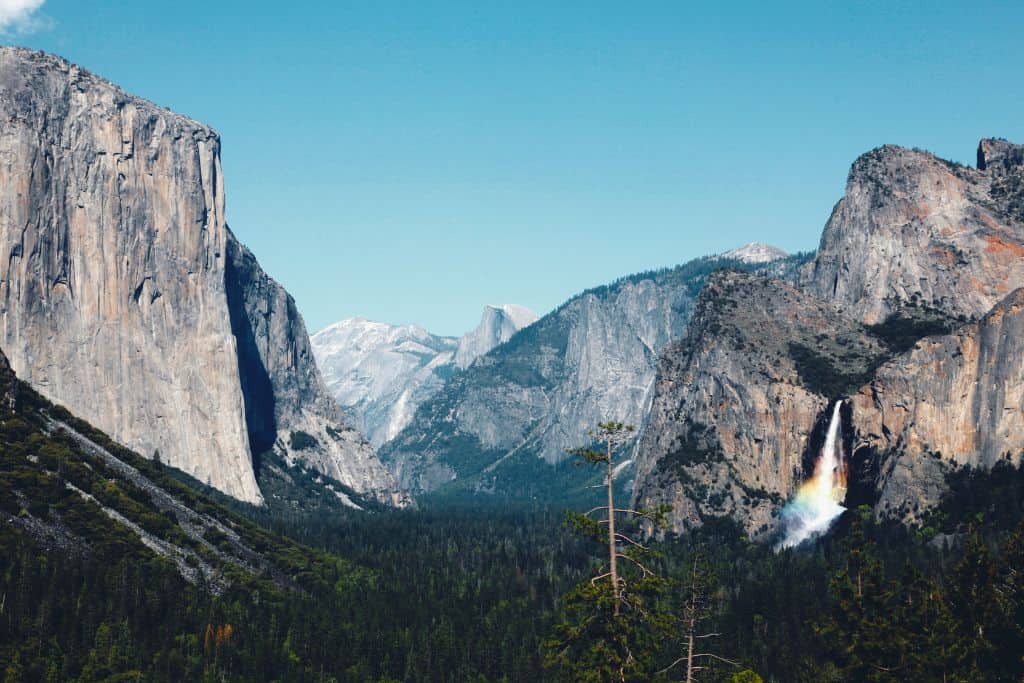Is Yosemite Worth Visiting Or Is Yellowstone Better?
Yosemite and Yellowstone are two of America’s most iconic National Parks and honestly, both are worth visiting. However, if you have limited vacation time for this year, you’ll have to choose one.
The two parks are quite distinct and they both have pros and cons. Which park you choose to visit first, will depend on a variety of factors.
Including things such as the amount of time you have to visit, how far you need to travel, the availability of accommodation, and what type of experience you are looking to have.
We’ll take a look at these factors and more to help you make your decision.
So read on to find out if Yosemite is worth visiting, or if Yellowstone is better.
Is Yosemite Worth Visiting?
The short answer is absolutely! Of all the places we have been in the world, there are few that rival the natural beauty of Yosemite. It is with good reason that the park is world famous.
Thousands-of-foot-tall granite cliffs, towering waterfalls, and millennia-old Giant Sequoias are just some of the wonders Yosemite offers.
What makes Yosemite particularly worth visiting is that it truly has something to offer to everyone. Whether you are a world-renowned rock climber or a family with young children Yosemite will keep you entertained.
What Is Yosemite Known For?
Yosemite is perhaps most well-known for the spectacular geologic formations of Yosemite Valley. The valley was carved out by slow-moving glaciers starting 2-3 million years ago. Leaving behind almost vertical granite cliffs thousands of feet tall.
Additionally, the park is home to some of the oldest and largest trees on the planet. Within its boundaries are multiple groves of Giant Sequoia that are as old as 3,000 years!
Slightly less known, but equally astonishing, Tuolumne Meadows is a high alpine meadow surrounded by some of the highest peaks in the Sierra Nevada Mountain Range.
Is Yellowstone Worth Visiting?
Once again the answer is an unequivocal yes. Yellowstone is the nation’s oldest national park. It was founded in 1872 by then president Ulysses S Grant.
Yellowstone’s designation as a National Park spurred the National Park program as a whole which now oversees 85 million acres of land.
Yellowstone’s well-deserved reputation draws over 3 million visitors per year, from around the world.
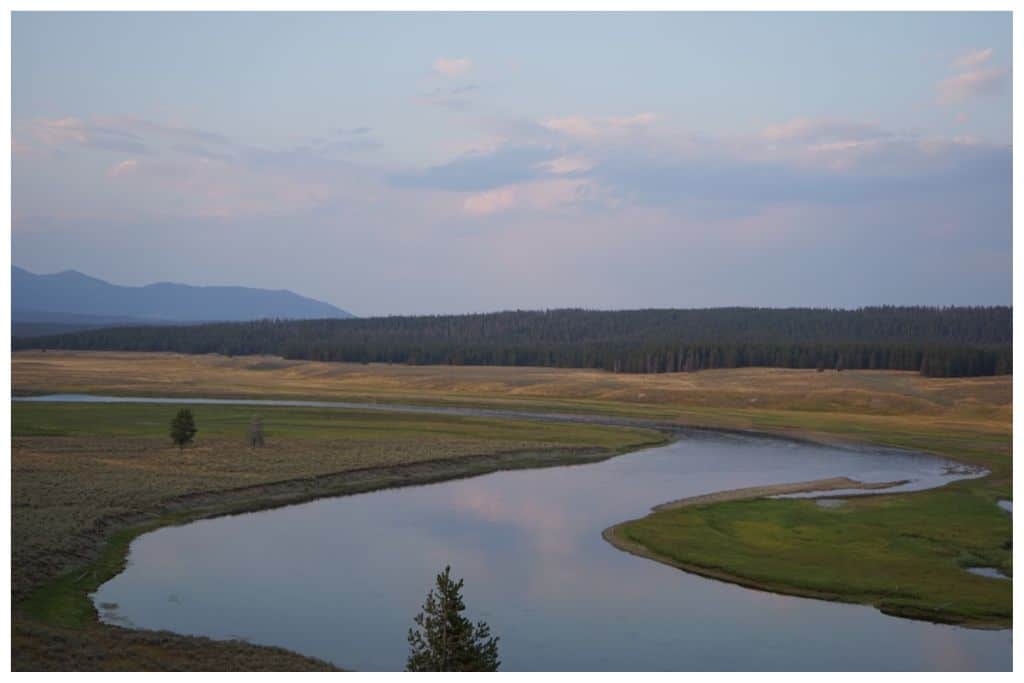
What Is Yellowstone Known For?
Yellowstone is most well known for its wildlife and geothermal activity, in particular Old Faithful.
Yellowstone is perhaps the only place remaining on the planet that is home to both packs of wild wolves and herds of wild Bison. These are just two of the many species that call Yellowstone home.
In addition to the geothermal activity, Yellowstone is also home to The Grand Canyon of Yellowstone (not to be confused with The Grand Canyon in Arizona). A deep river canyon that is often overlooked when discussing Yellowstone.
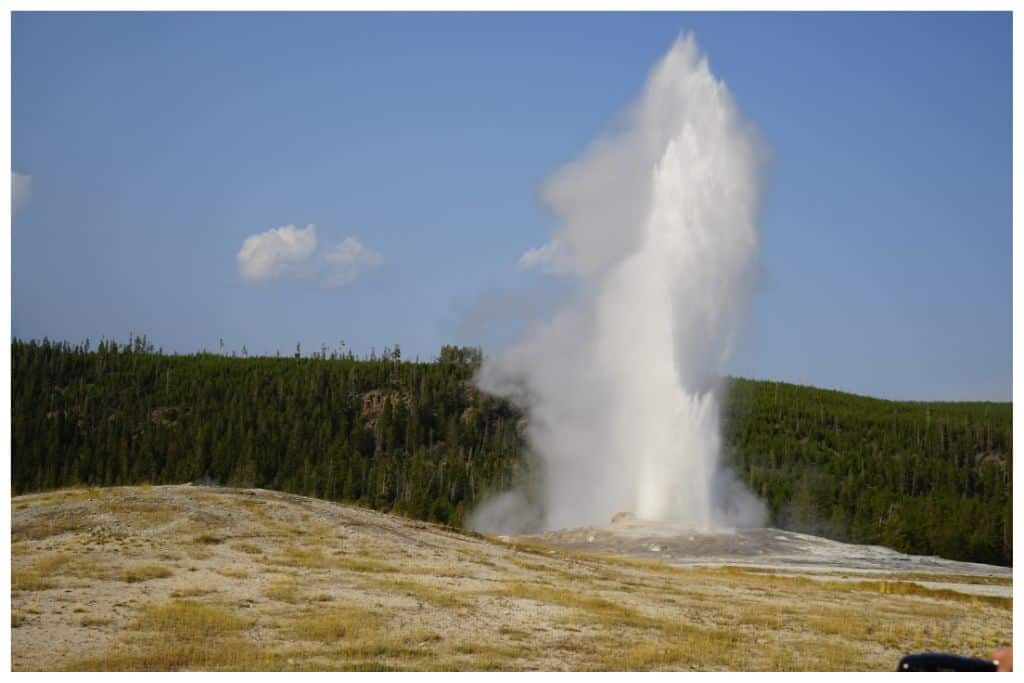
Is Yosemite Better Than Yellowstone?
Answering the question of whether Yosemite is better than Yellowstone, is quite honestly, a matter of personal preference. Both parks are remarkable and yet, quite different from each other.
Yellowstone Wildlife
Yellowstone is unrivaled in North America when it comes to the amount and proximity of wildlife.
On a trip to Yellowstone a few years back, we watched a pack of wolves meandering through the Lamar Valley in the morning. Had a female Elk come within 20ft of our campsite while having lunch. And watched two grizzly bears fight over a buffalo carcass in the evening.
There simply isn’t anywhere else where you can have an experience like that.

Yosemite Wildlife
Yosemite is also home to a multitude of wildlife supporting more than 400 species. Perhaps most notably black bears, which frequent campgrounds throughout the park in search of food.
Additional species include mountain lion, deer, fox, and big horn sheep amongst others.
While it is not uncommon to spot wildlife in Yosemite, it just doesn’t come close to rivaling Yellowstone.
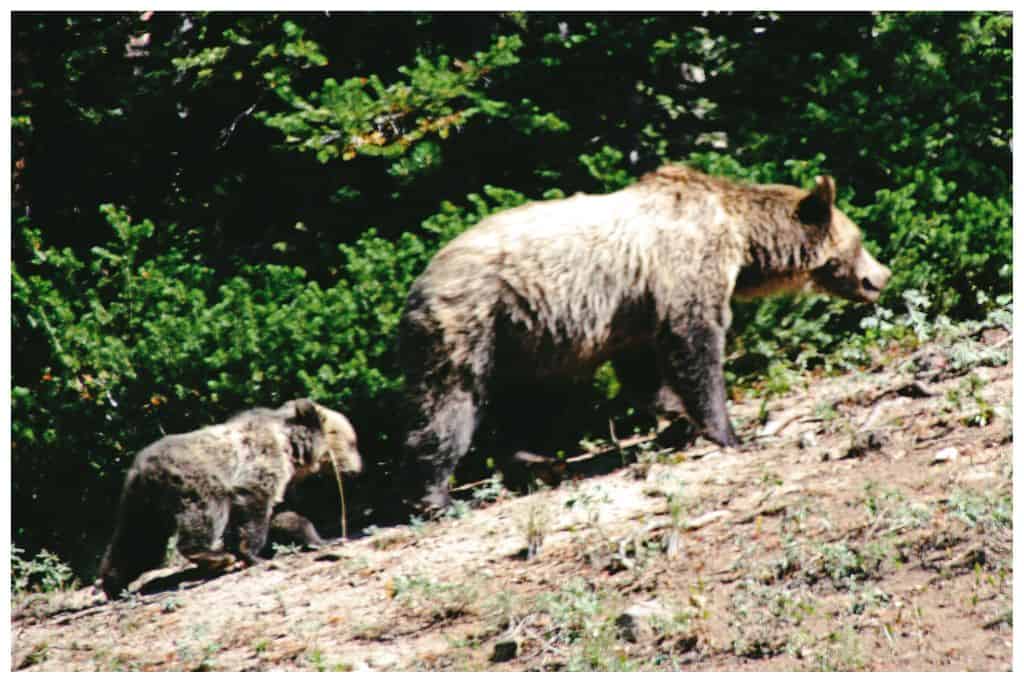
Yellowstone Geology
In addition to the abundant wildlife, Yellowstone has some amazing geologic features of its own. The Yellowstone Caldera makes up a significant portion of the park. The geothermal activity associated with the caldera results in warm mineral-rich water working its way to the surface.
In some places, it bubbles up through prehistoric-looking mud pits, and in others, it explodes violently out of the earth and into the sky in jaw-dropping demonstrations of the earth’s magnificence.
However, in comparison to Yosemite, Yellowstone has far less elevation change. The lowest point, Reese Creek, is 5,282 feet, and the highest point, Eagle Peak, is 11,358 feet. Giving the park a total elevation change of 6,076 feet.
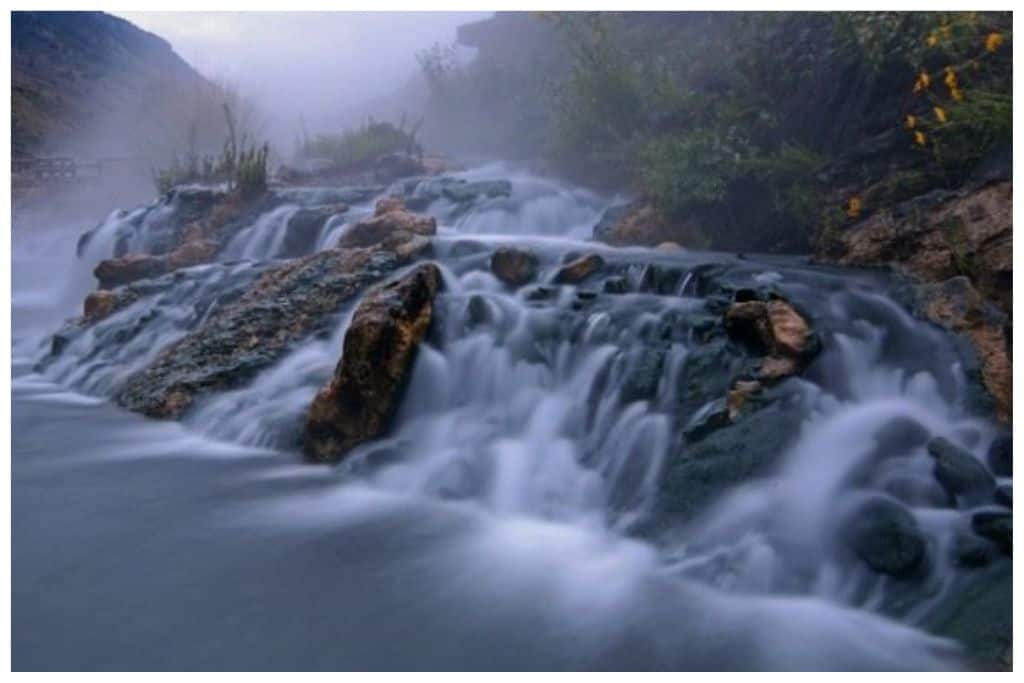
Yosemite Geology
While Yosemite lacks the geothermal activity of Yellowstone it makes up for it with the stunning granite features of the park. From the Yosemite Valley floor of 3,960 feet you can stare almost straight up (and hike if you choose) to the summit of Half Dome at 8,839 feet.
One could, continue that journey on foot up another 4,275 feet to the summit of Mt Lyle, the highest point in Yosemite at 13,115 feet.
Overall from the parks lowest point of 1,800 feet at the El Portal administrative site to the summit of Mt Lyle, it is a change of 11,315 feet.
The expansive views of Yosemite, looking either up or down, leave you marveling at the beauty of nature.
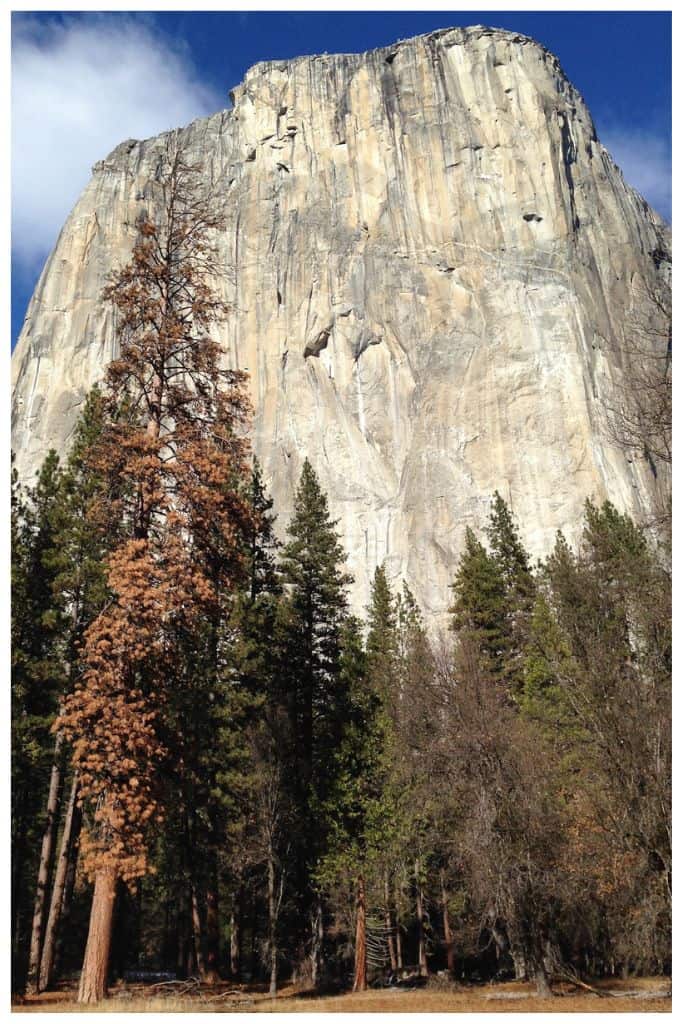
Seeing The Parks
It is important to note the experience of getting around the parks, and seeing the main attractions is completely different.
Yellowstone’s attractions are spread out, and seeing what the park has to offer really requires being in your car on a daily basis. Due to the popularity of the park and the limited roads, this could mean spending multiple hours in your car each day traveling from one highlight to the next.
One aspect that makes Yosemite worth visiting is that it offers numerous locations to stay where you can park your car upon arrival and never need to get back in it. With hiking and other site-seeing opportunities all within walking distance.
So which one is better? Neither. Yosemite and Yellowstone are at the same time remarkably different and equally amazing. We say visit both! For the purposes of this article, we’ll assume you’re going to start with Yosemite!
Best Things To Do In Yosemite
One could spend a lifetime in Yosemite and still not exhaust all the options for amazing things to do. We’re going to focus on single-day adventures and things that are family-friendly.
We’ve broken our list into two sections. The first section includes things to do in and around Yosemite Valley. The second section includes things to do in and around Tuolumne Meadows.
While it is possible to drive back and forth from Yosemite Valley to Tuolumne Meadows we don’t recommend attempting to see both in a single trip. Both Yosemite Valley and Tuolumne Meadows are worth visiting. However, we recommend making two separate trips to give each the attention they deserve.
Alternatively, if you have a Van or RV or another easy way to change your campground you could consider spending 3 nights in each location.
Section 1 – Yosemite Valley
1. Rent a bike and tour the valley floor
Without question, the best way to tour the Valley Floor is on a bike. While Yosemite National Park is quite large, Yosemite Valley, where many of the most beautiful sites are, is relatively small.
The Valley is the most popular area of Yosemite and in the summer months, parking is very limited. Once you have a spot to park your car, you really aren’t going to want to move it.
Thankfully, bike rentals are available just in front of curry village. The Valley is bike-friendly with well-marked bike paths throughout.
Must-see stops to include on your tour of the valley floor are;
➡️ Mirror Pond – Made famous by Ansel Adams photos and offers an incredible look up at Half Dome.
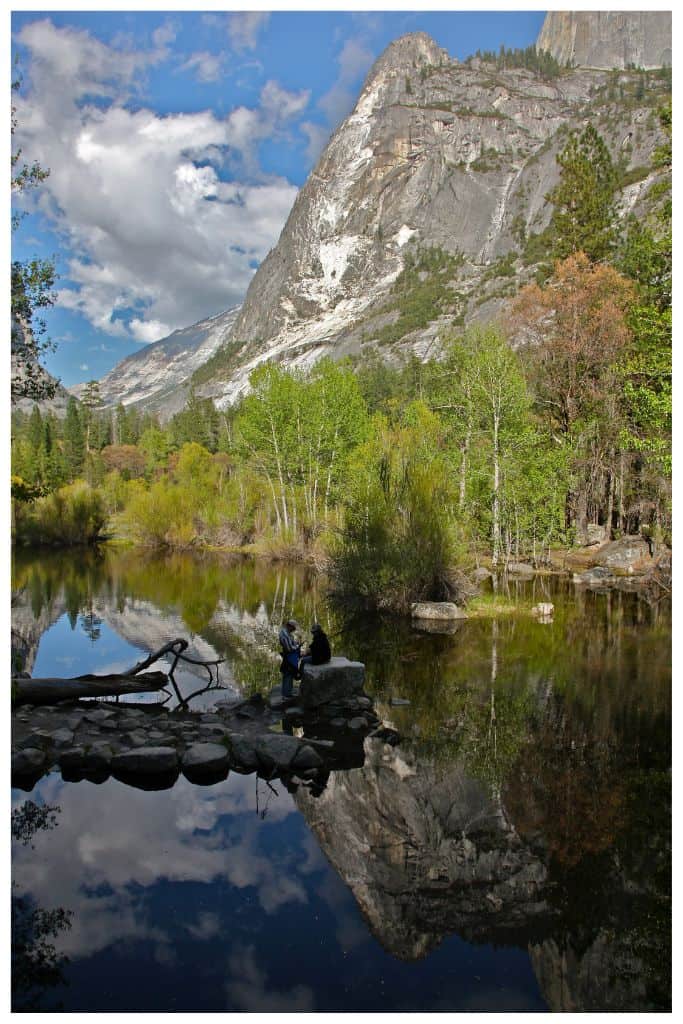
➡️ Yosemite Village – Hosts an Ansel Adams art gallery, food, gift shop, and visitor center.
➡️ Yosemite Falls – A short ride from Yosemite Village. Lock your bike up at the trailhead and take a short hike up to the falls. This is a flat and easy trail good for all ages.
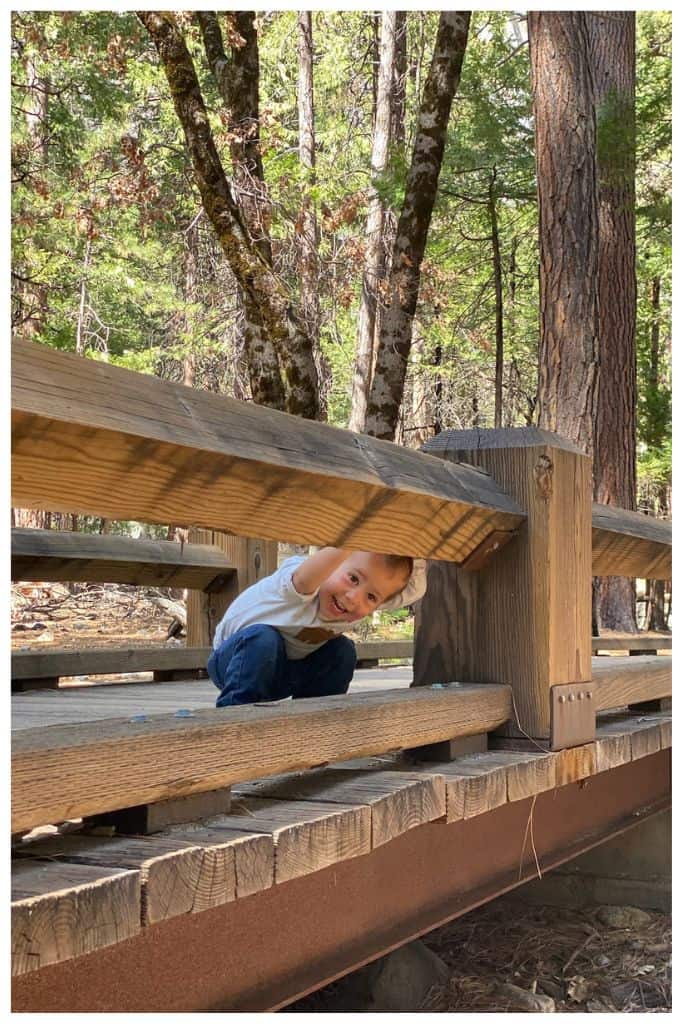
➡️ Bridal Veil Falls – A slightly longer ride down the valley. Another short hike from the trailhead where you can lock your bike up.
A tour of the valley floor alone makes Yosemite worth visiting, but that is just one of the many attractions the park has to offer.
2. Hike the Mist Trail
The Mist Trail is a 7-mile hike that starts near the top of Yosemite Valley and takes you past the thunderous Vernal and Nevada Falls.
The trail derives its name from a section of steps carved into the cliff face climbing up to Vernal Falls. The water falls 317 feet into a pool below creating a cloud of mist that at times, can completely envelop the trail. Depending on the wind direction and water level you may even need a rain jacket or poncho if you want to reach the top dry.
If you have young children don’t attempt to climb the stairs up to the top of the falls. The elevation gain is challenging enough, but more importantly, the steps can be quite slippery, and the fast-moving water at top of the falls is not a safe environment for young kids.
That doesn’t mean you need to miss out altogether. Simply shorten the hike to the base of Vernal Falls at the bridge view site. You still get a wonderful view of the falls and a great sense of the mist it creates.
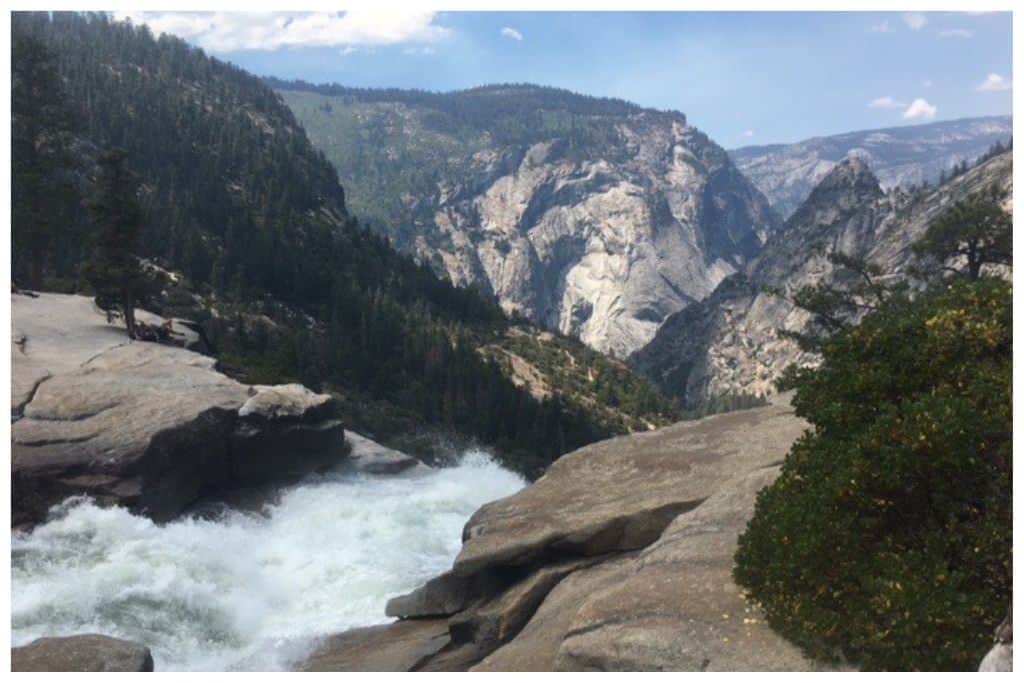
3. Have a Meal at the Awahnee
The Ahwahnee lodge is a classic wood lodge in the heart of Yosemite Valley. Originally built in 1927 the Awahnee is a must see stop when visiting Yosemite Valley.
The dinning room, with its vaulted wood beam ceiling, is a beautiful place to enjoy a meal. Reservations are required. While at the Awahnee take a break and relax in the Great Lounge. This grand room features a massive fireplace and is a wonderful place to relax with a drink, read a book, or just kick your legs up for a bit.
4. Hike Half Dome
Rising 4,000 feet above the valley floor, Half Dome is one of the most iconic sites in Yosemite Valley. Half Dome draws many people to Yosemite and on its own is worth visiting.
The unique isolation of this rounded peak offers stunning 360-degree views of Yosemite National Park.
This is a long and challenging hike. If hiked in a day it is 16 miles and 4,800 feet of elevation gain. Additionally, the final climb to the summit of Half Dome requires a somewhat harrowing ascent of a very narrow granite spine that drops off thousands of feet on either side. The park mounts guide cables into the granite to help you out, but it is not for the faint of heart.
All that is to say this hike definitely isn’t for young kids and is really best for experienced hikers.
If Half Dome is on your Yosemite bucket list beware that a permit is required to climb to the summit. Due to the popularity of this hike, you must enter a raffle to obtain a permit to summit Half Dome. The seasonal raffle is open for application during March. Your best shot at getting a permit would be to apply during this time.
There are a limited number of permits available through the daily lottery system during the hiking season. You must apply for the daily lottery two days prior to the day you wish to climb Half Dome.
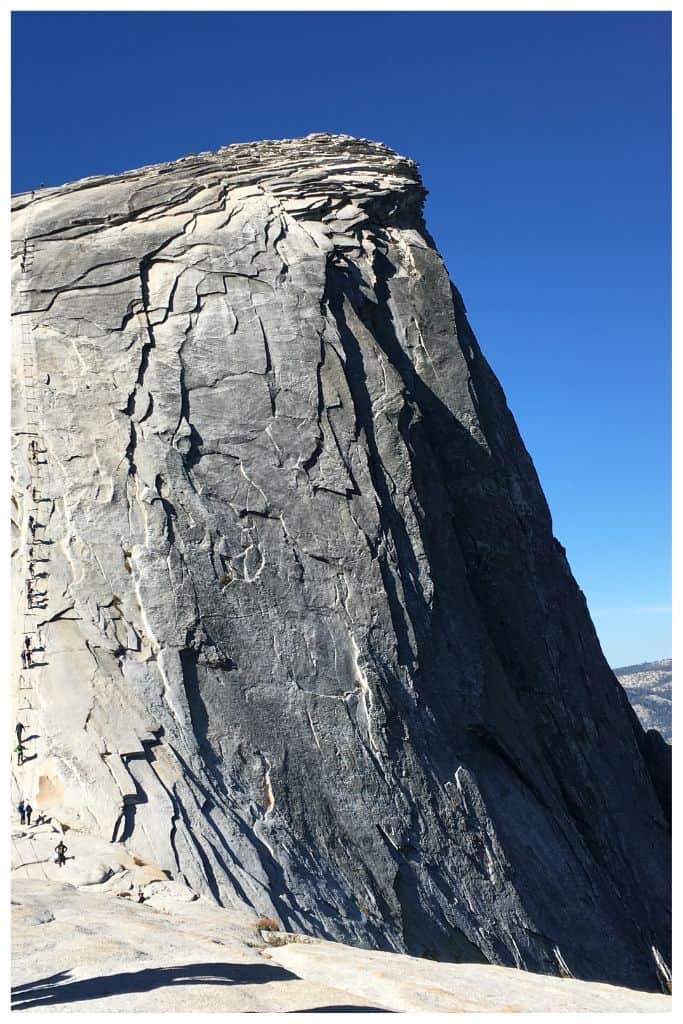
5. Visit The Giant Sequoias
There are multiple groves of Sequoia in Yosemite. The Mariposa Grove is the largest and most well know of the three groves within Yosemite National Park. It is about an hour and 15-minute drive from the valley to reach the Mariposa Grove.
There are 500 mature Sequoias in the Mariposa Grove. The oldest is over 3,000 years old. The tallest tree comes in at 286 feet tall.
There are two additional groves of Sequoias in Yosemite, the Tuolumne and the Merced Groves. These two slightly smaller groves are still impressive and are a little closer to the valley, approximately a 45-minute drive.
The drive to see these magnificent and ancient trees in Yosemite is well worth the visit.
If you are staying in the Valley you may want to consider making a stop at one of the groves on your way into or out of the park.
6. Drive Up To Glacier Point
Glacier Point is a viewpoint looking over Yosemite Valley. There are viewing platforms with railings to keep you safe, from the edge of the viewing platform it is 3,214 foot drop nearly straight down.
While the park has put railings in place to keep the platforms safe if you are someone who gets anxious around heights or has small children you may want to skip this stop.
If you have a particularly ambitious hiker in your group, it is possible to hike from Glacier Point to the Valley Floor. It is a 4.8 mile trip one way, and a descent of 3,214 feet.
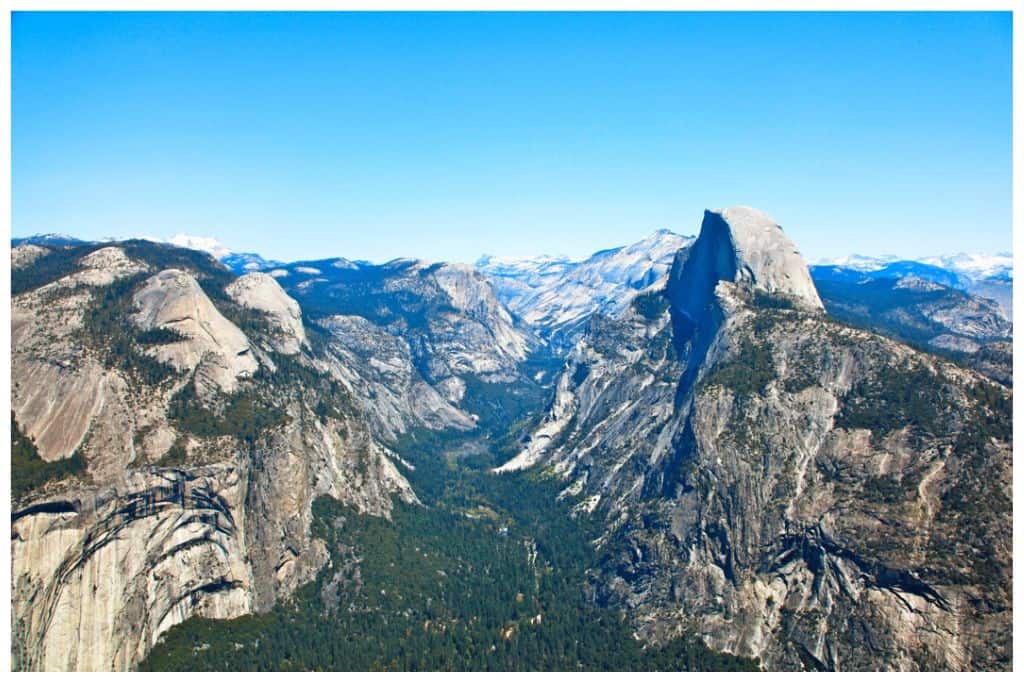
7. Stop for a Photo at Tunnel View
Tunnel View is a viewpoint at the east end of the Wawona Tunnel on Highway 41. Many of the most well-known photos of Yosemite were taken from Tunnel View.
It provides a gorgeous view looking up the valley and the landmark points of Bridal Veil Falls, El Capitan, Glacier Point, and Half Dome are all visible.
The best time of day to get a photo from Tunnel View is in the late afternoon or evening.
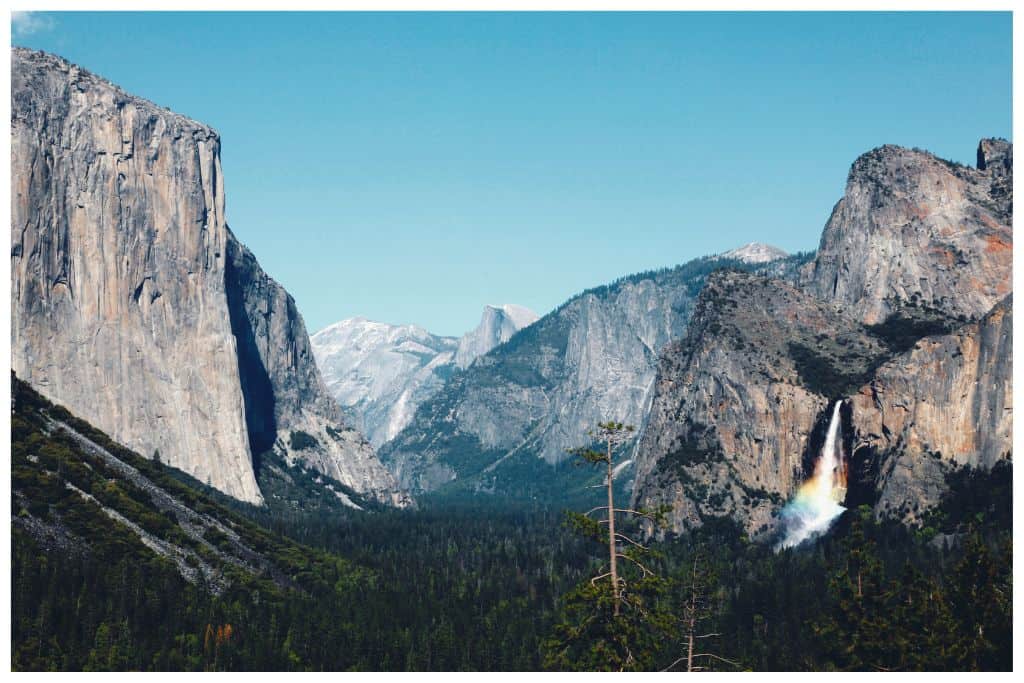
Section 2 – Tuolumne Meadows
1. Spend an Afternoon Playing in the Tuolumne River
Tuolumne Meadows Campground lies along the Lyle Fork of the Tuolumne River. Right in front of the campground, the river passes over, between, and through a series of granite boulders making a beautiful series of cascading pools that are perfect for kids to play in. The water is chilly, but it is a great way to pass a warm afternoon.
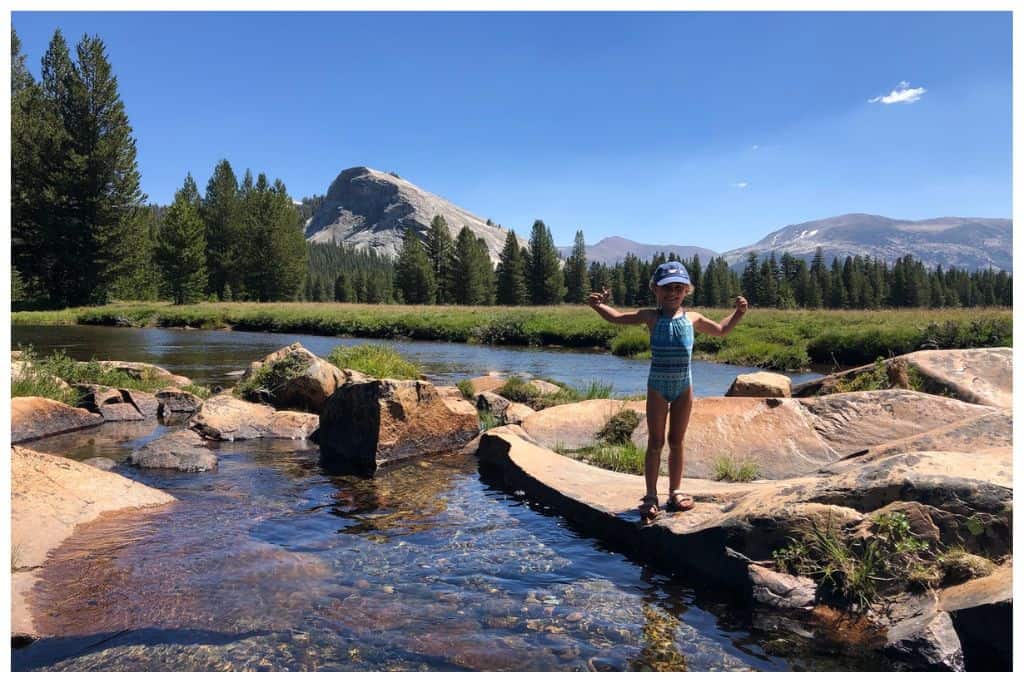
2. Hike to Soda Springs and Parsons Lodge
This is a relatively easy hike of only 1.6 miles. It is great for kids and families as it is flat, with only 52 feet of elevation change. The trail passes through the middle of the meadow and offers great views of the granite peaks in the background.
The morning or evening are great times to see deer and other wildlife in the meadow.
You can visit the historic Parsons Memorial Lodge which is a stone building built by the Sierra Club in 1915.
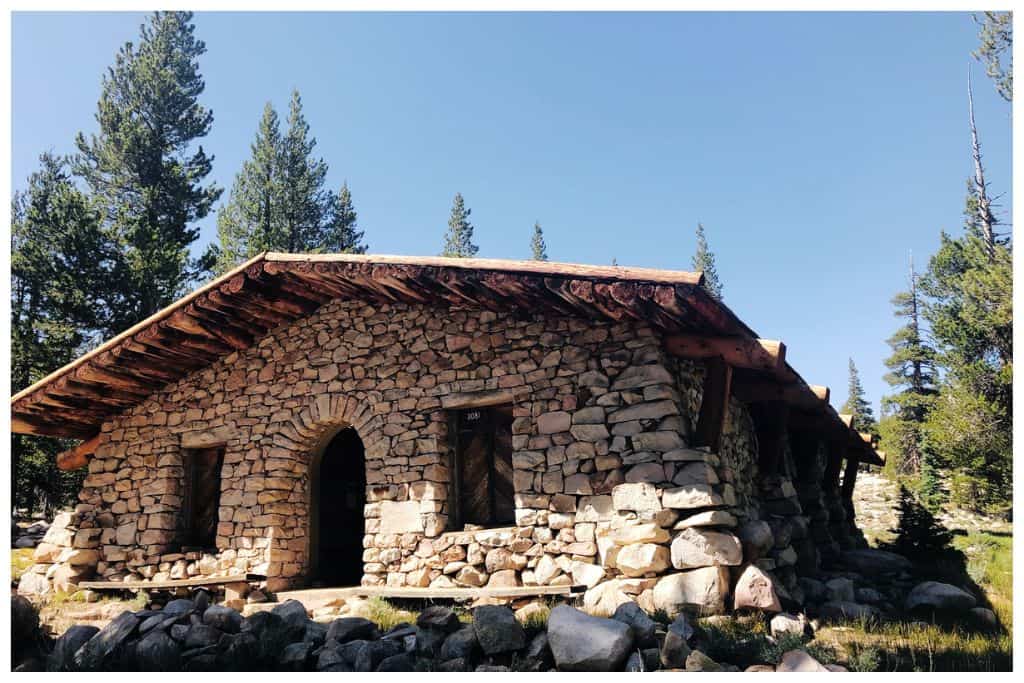
3. Hike Lembert Dome
Lembert Dome could be considered a younger sibling of the much more well-known Half Dome in Yosemite Valley. It is a large dome-shaped granite formation sitting in the middle of Tuolumne Meadows
The dome rises 800ft above the surrounding areas and offers a great view of Tuolumne Meadows from the top. It is a relatively easy hike at 2.8 miles.
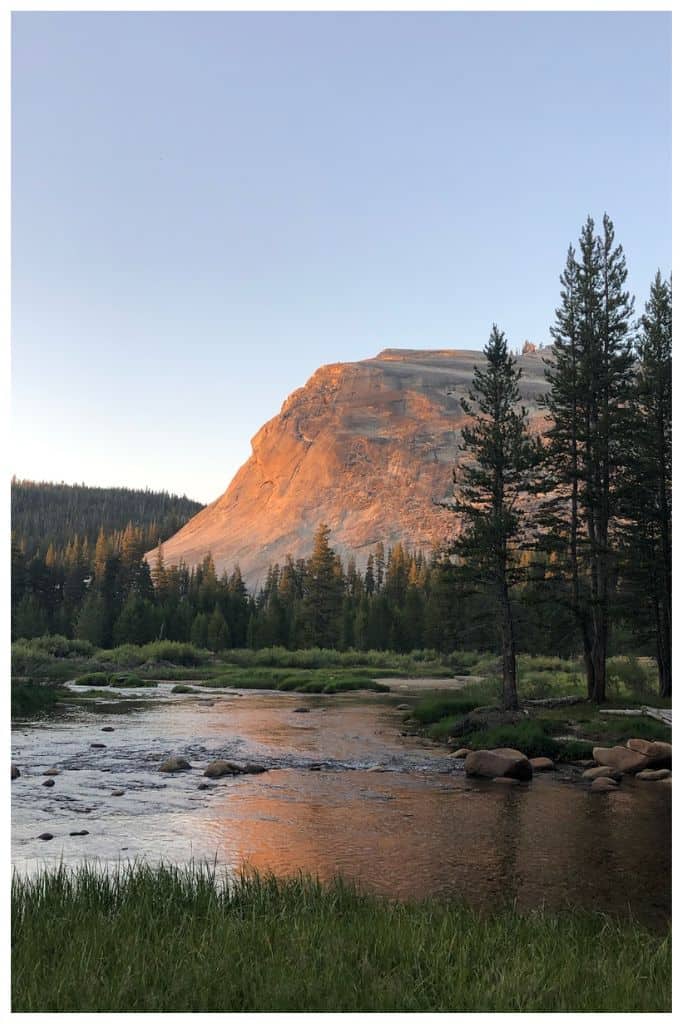
4. Visit Saddle Bag Lakes
While Saddle Bag Lakes is technically just outside the Yosemite park boundaries it is worth a visit. Sitting at 10,000 feet this high alpine lake has sparse vegetation and gives an other-worldly feeling.
You can take a water taxi across the lake to access what is commonly known as the 20 Lakes Basin. This series of trails wander past a host of smaller but no less beautiful mountain lakes. The full loop is 9.1 miles.
5. Hike To Lake Elizabeth
The trail to Lake Elizabeth begins right in the Tuolumne Meadows Campground. It is a moderately difficult hike at 4.6 miles and 900 feet of elevation gain. The small mountain lake the trail leads to is nestled in a picturesque granite basin.
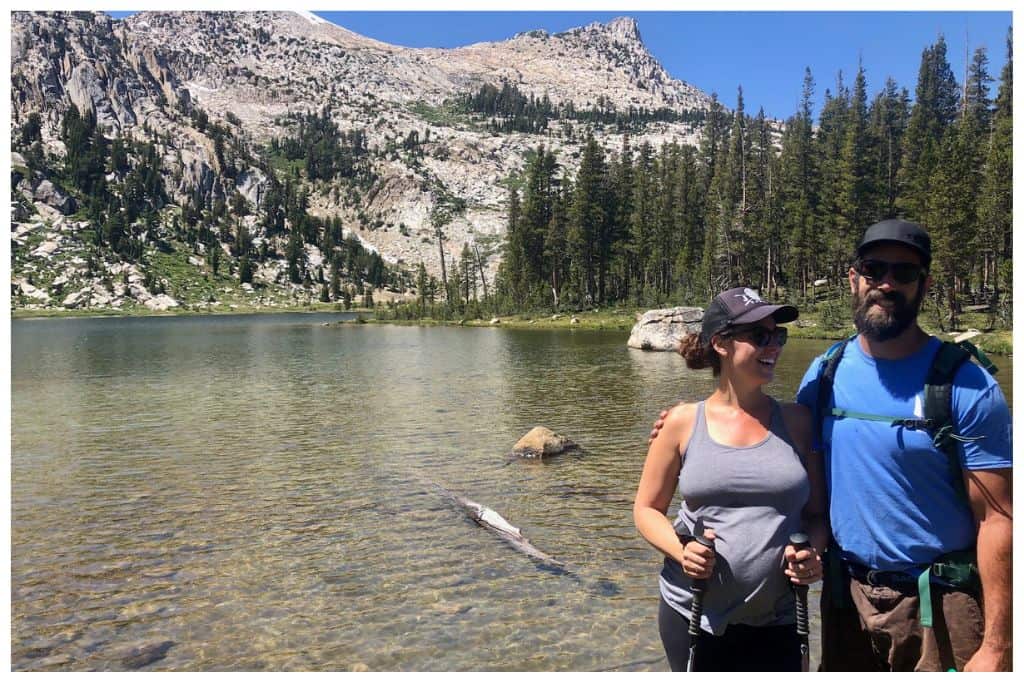
6. Hike to Cathedral Lake
The Cathedral Lake trail is more challenging rising 1,607 feet. It is a total of 8.5 miles out and back. You are rewarded with a fantastic view of Cathedral Peaks once you reach the lake.
Conveniently, it is possible to do the Cathedral Lake hike directly from the campground, eliminating the need. to get in your car.
These are just a few of the hikes accessible from Tuolumne Meadows. There are many more, all of which are equal in beauty to those listed above.
Best Time to Visit Yosemite
Yosemite Valley is open year-round and is beautiful to visit any time of year. It does snow in the valley in the winter, which creates beautiful scenery, but be sure to pack your warm clothes.
However, the best time to visit is typically in the late spring to summer. This time frame will give you warm days, cool nights, and typically there will still be plenty of water flowing. The wonderful weather in Yosemite in the summer are one of the many things that make it worth visiting.
The earlier you go in the year the more dramatic all of the waterfalls will be.
Tuolumne Meadows is only open seasonally. Tuolumne Meadows is accessed via Tioga Pass Road which is typically open from May to November. The exact dates depend on the snowpack so be sure to check road conditions before planning a trip.
The Tuolumne Meadows campground typically opens around late July. Again, exact dates vary depending on conditions, so be sure to check with the National Park Service.
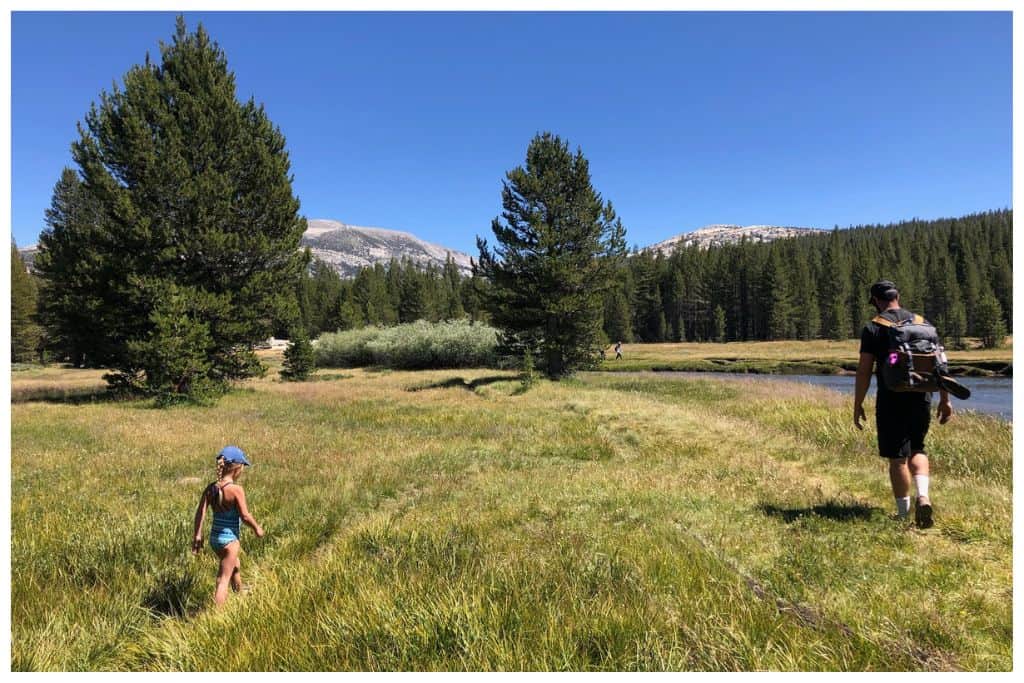
Average temperatures in Yosemite Valley;
May – High 73 / Low 44
June– High 82 / Low 50
July– High 90 / Low 55
August– High 90 / Low 56
Average temperatures in Tuolumne Meadows;
July– High 72 / Low 37
August– High 71 / Low 35
September– High 66 / Low 30
Forest Fires
It is important to take note that in recent years California has seen an increase in forest fires in the late summer and early fall.
A number of these fires have directly impacted conditions in Yosemite.
Therefore, when planning a trip you may want to consider visiting Yosemite earlier in the year in order to minimize the chance of your trip being affected by a forest fire.
What To Pack
Yosemite is often chilly in the morning and evening and warm in the middle of the day so you will want to pack layers so you can adjust to the changing temperatures throughout the day.
Keep in mind that Yosemite is prone to thundershowers so it is advisable to bring along a rainjacket no matter what time of year you visit.
While the rivers and lakes are typically chilly, there are plenty of good opportunities to jump in the water for a swim. So don’t forget a swimsuit.
Be aware that while the mountain water may look extremely clear, it is not safe to drink without filtering. We recommend bringing along a water filter to be able to refill water bottles from the rivers and streams safely while hiking.
Many of the best hikes in Yosemite involve a lot of up and down. The use of hiking poles can be a great way to reduce the stress on your joints, knees in particular, as well as help you balance on uneven terrain.
For detailed ideas on what to pack, check out our Yosemite essentials packing list below;
Gear
✅ Backpack
✅ Sunscreen
✅Water bottle
✅Water filter
✅Camera
✅Flashlight/Headlamp
✅Hiking Poles
Clothes
✅Hiking boots
✅Long underwear or leggings
✅Warm Pants
✅Shorts or lightweight pants for hiking
✅Light weight T-Shirt
✅Long sleeve shirt
✅Lightweight jacket or sweatshirt
✅Down or highly insulated jacket
✅Beanie for mornings and nights
✅Gloves for morning and evening
✅Hat with brim for daytime
✅Sunglasses
Where To Stay & Where Not To Stay In Yosemite
There are many options for places to stay just outside the park, and while many of these do offer great accommodations we highly recommend staying in the park due to the traffic and limited parking.
If you are unable to find accommodation inside the park Yosemite is still worth visiting. Simply find a spot outside the park and just remember to head into the park as early as possible to avoid traffic and to find a parking spot.
Similarly, when heading back to your hotel for the night consider having dinner in the park and waiting for the traffic to subside before returning to your hotel.
Best Places to Stay in Yosemite Valley
➡️ The Ahwahnee Hotel: If you are looking for luxury The Awhanee is the place to stay. Built in 1927 this beautiful lodge is centrally located in Yosemite Valley. It offers a pool, restaurant, bar, gift shop, and all the amenities you’d expect with a luxury hotel.
➡️ Curry Village: If you prefer a more rustic experience but don’t have your own camping gear then Curry Village is a great option. Curry Village offers simple tent cabins, with access to public bathrooms, and a nearby restaurant, pizzeria, and bar. You can opt for a heated cabin to stay warm at night.
Note that the cabins are very basic, quite close together, and the beds can be old and sag. That being said, Curry Village is a fun and lively place to stay.
➡️ Upper Pines Campground: There are a variety of campgrounds in and near the valley. We prefer the Upper Pines campground for families because it sits next to a smaller tributary section of the Merced River. There are many sites along the river bank and all sites are within walking distance of the river.
While sections of the Merced can be fast-flowing and dangerous, there are many spots close to the campground that are great for kids of all ages.
Best Places to Stay Tuolumne Meadows
➡️ Tuolumne Meadows Campground: Tuolumne Meadows is home to only one campground. The campground typically doesn’t open until early August but can vary depending on the snowpack. It is quite a large campground with multiple loops. The best sites are along the river.
➡️ Tuolumne Meadows Lodge: Similar to Curry Village the Tuolumne Meadows lodge is comprised of semi-permanent tent cabins. They are canvas tents built on metal frames with cement platforms. The cabins at Tuolumne meadows lodge have wood-fired stoves for heating. There is no electricity in the cabins, but there are hot showers available in the common bathrooms.
How Many Days Should You Spend in Yosemite?
Yosemite Valley
To make your trip to Yosemite really worth the visit we recommend a minimum of a 3-night stay. . Giving you two full days.
Use the first day to rent bikes and tour the valley floor. On the second day take your pick between hiking the mist trail or driving up to Glacier Point.
If you can extend your trip to 5 nights and four days it would give you time to both visit Glacier Point and hike the mist trail, as well as one of the groves of Giant Sequoias.
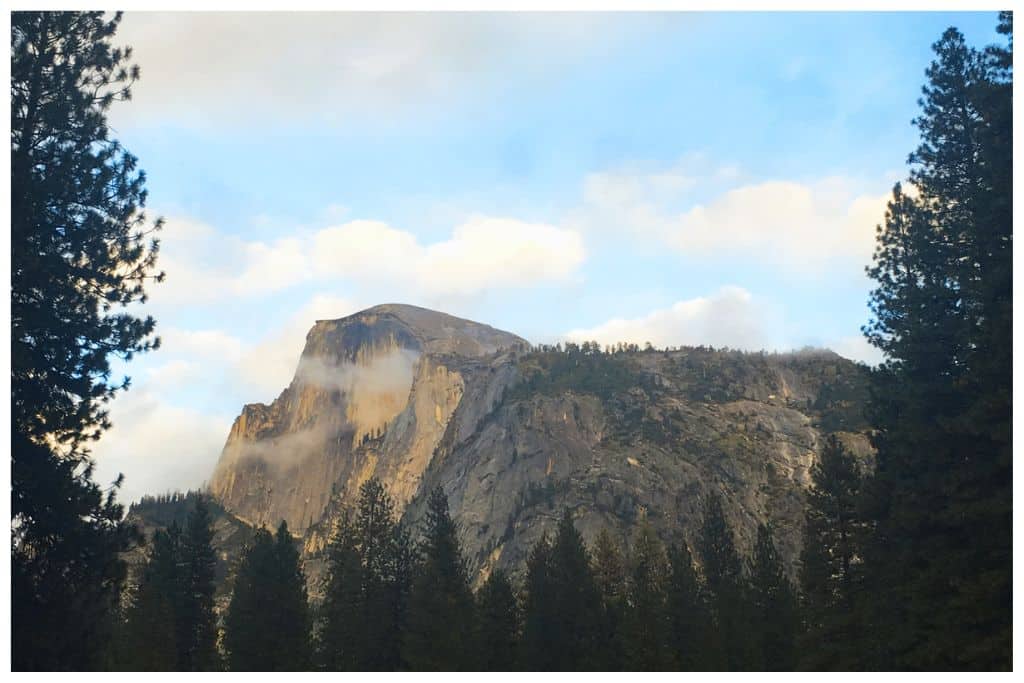
Tuolumne Meadows
For Tuolumne Meadows, we also recommend a minimum of 3 nights and 2 days. Use the first day to get acclimated to the high altitude and take a short hike to Soda Springs.
On the second day take your pick of hiking up river if you have smaller kids, or pick one of the longer hikes if you have a more active group.
You can easily spend up to a week, or longer, camping at Tuolumne Meadows without running short on things to do. The longer you stay the more you will fall in love with this incredible piece of the Sierra Nevada Mountains.
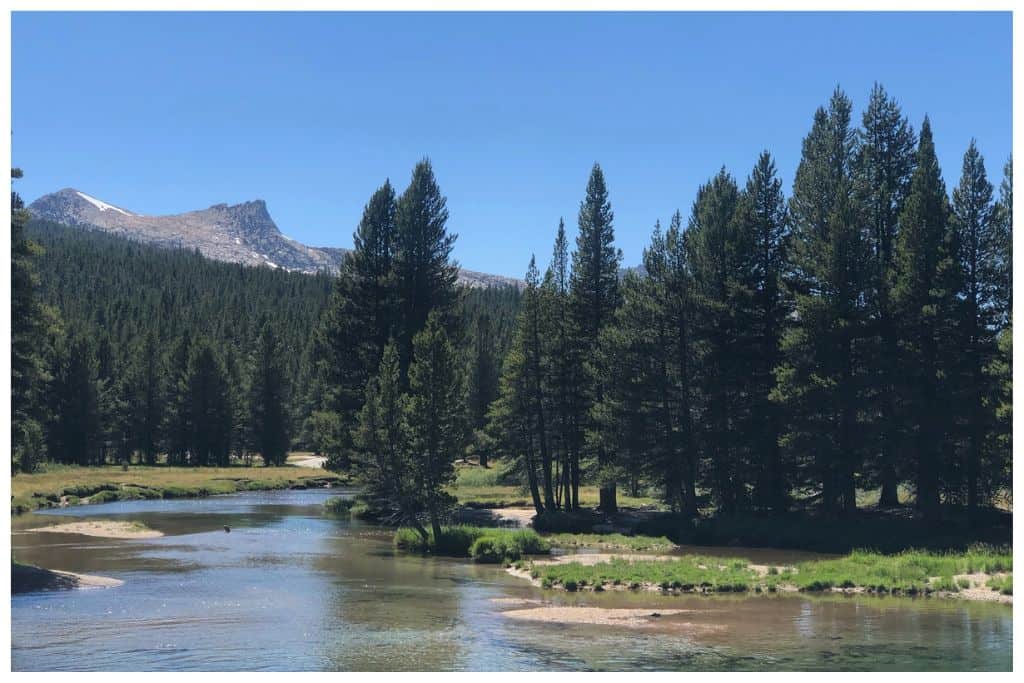
Conclusion: Is Yosemite Worth Visiting?
If we haven’t made it clear already, Yosemite is unquestionably worth visiting. Simply put the park is magical.
Our family has been visiting Yosemite for generations. We’re confident that once you visit for the first time, the real question will become, how often do you plan to return?
